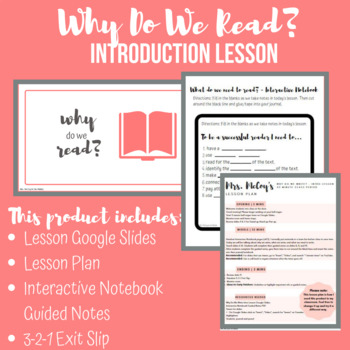Why Do We Read? Introduction to Reading Lesson (Middle School)
- PDF
- Google Apps™

What educators are saying
Description
Start your year off by putting meaning behind reading. This lesson focuses on why we read, what we read, and what we need to do in order to read successfully. Students will be engaged in small group discussion, whole class discussion, guided notes, and will be assessed with a 3-2-1 Exit Slip at the end of the lesson. Please contact me on TpT if you have any questions!
THIS PRODUCT INCLUDES:
1. Google Slides to use while teaching the lesson
2. Guided Notes Interactive Notebook Templates
3. Lesson Plan
4. 3-2-1 Exit Slip
SIMILAR PRODUCTS:
1. Why Do We Write? Introduction to Writing Lesson
2. Back to School - Sticky Note Activity (Middle School & High School)
3. Middle School Book Tasting Kit
LET'S CONNECT:
Instagram: @mrsmccoyinthemiddle
Twitter: @mccoyinthemid





